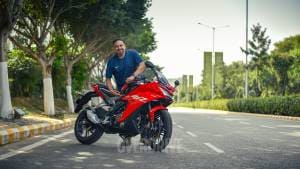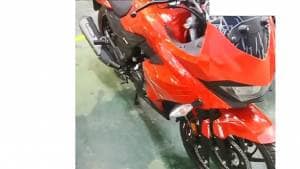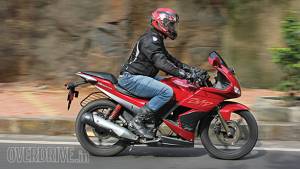2014 Hero Karizma ZMR India road test
The reactions to the reveal of the new Karizma were pretty strong. For every comment that said the new bike looked great, there was one person who claimed to have his eyes glaze over at Hero's umpteeth cosmetic update to the motorcycle. And two others who hated the way it looked.
Which is kind of strange because the original Karizma didn't generate such vehement opinion. It subtly endeared itself to you until you started calling it the 'Zma and one day, you found that you couldn't live without it. Has the new one changed that much?
It certainly is a big project for Hero. Because this isn't, despite the commenters, a stickers-only project. There are new stickers, but there is also a bump up in power, more torque and an upgrade in performance as well.
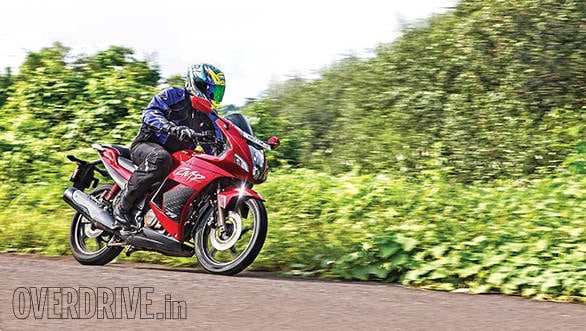
We did get a short spin on a dealer's ZMR a month or so ago. But finally, our test ZMR is here and we've been out living with the successor to India's erstwhile top tourer. Here's what happened.
Design, finish and build
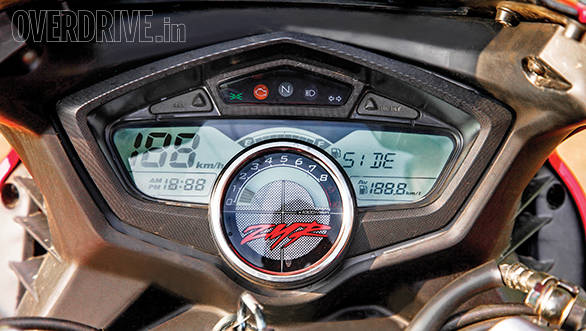 Busy instruments are clear once you get used to them. Tacho can be hard to find though
Busy instruments are clear once you get used to them. Tacho can be hard to find though
Rishaad likes to call the new ZMR, the Indian Hayabusa. The logic is simple. The ZMR is long, low, fast and not so pretty - which is pretty much how the 'Busa can be described. The original design of the Karizma was pretty cohesive and the detour the motorcycle took through the previous ZMR has done it no favours. The new motorcycle looks more together than the portly old ZMR. The fairing is tauter in line and curve and the smooth, unbroken rising line that connects the carbon-look sticker on the fairing to the tip of the sharp tailpiece looks neat and uncluttered. In a parking lot, the length of the body from the fairing to tailpiece is inescapable. Also noticeable is the old-school design in how the rider's seat and the top of the tank are not that far apart in height. The seat step for the pillion is also very small. I would bet Erik Buell had something to do with this design. It has that odd practicality and unique aesthetic decisions that the American engineer is capable of. However, pretty the bike is not. The vertical headlamps and the rectangular indicators (with DRL) do not really resolve into a pretty face though you notice that people notice the bike quite a lot.
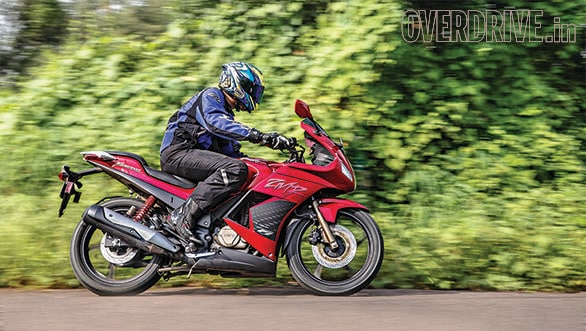
 The non-hinged fuel tank cap is inconvenient
The non-hinged fuel tank cap is inconvenient
However, I wish I could say finish and build quality levels were amazing. Because they're a notch below par for the segment. You observe lots of small things. On our bike, the brake lever touches in the inside of the fairing. The tail light cluster is off centre. First a mirror came loose and then that mirror's mount lost a screw mid-ride. The overall motorcycle feels rock solid and far from flimsy but the finish levels can stand a lot of detailed improvements and the build quality, similarly, can be improved.
Engine, performance and economy
The engine tuning work took the compression from 9.1 to 9.6:1 which creates better economy as well performance. The 223cc single has lost its asthma and now feels like it breathes well. The result is 20.23PS of the power at 8,000rpm as well as 19.7Nm of torque at 6,500rpm. This has led to a widening of the power spread creating a noticeably more rideable machine that needs few gear changes to stay on the boil.
On the move you'll notice that the ZMR delivers power with an urgency and effectiveness that the old Karizmas simply cannot match. It feels properly fast. With a 90kg rider, the ZMR hit 127.83kmph flat out, while 100kmph comes up in 13.35 seconds.
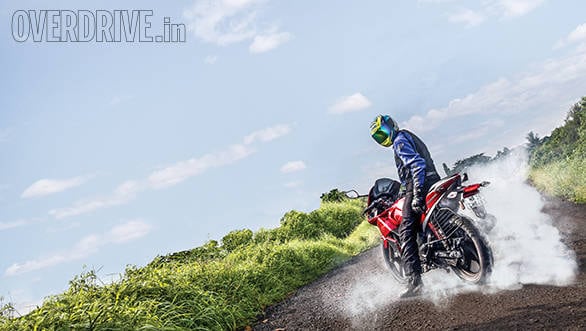
But numbers aside, I really liked the way it felt to ride. It feels calm and quick through traffic and you can ride in any gear you like, more or less. This bike's gearbox was a little reluctant to shift especially during the performance testing, but overall it all works. The powertrain comes together into a very likeable, useable machine that retains the old Karizma's highway manners too. Cruising at 6-7,000rpm in top gear is pretty smooth and you'll be strongly reminded of why the old Karizma was crowned India's top tourer by OVERDRIVE.
Issues? Around the peak power mark, vibration rears its head and around the 8,500rpm redline, it's impossible to ignore. The machine itself feels okay, but extended high speed runs will numb hands.
Finally, economy. The Karizma was not known for its economy but raising compression does allow engines to offer better economy. We were happy to see the ZMR return 39.1kmpl in the city and then surprised by its 51.6kmpl on the highway test. Which gives the bike an overall economy of 42.2kmpl. That's a good number.
Ride, handling and braking
The Karizma continues to use a diamond type frame like the old bike, but the wheelbase is a bit longer now. Cornering feels a little old school amongst the more current motorcycles. It's still natural and effortless but you can feel the length of the motorcycle when you turn. Stability in the middle of the corner - already excellent - benefits from the wider tyres. Word of caution, the suspension is still pretty soft so if you're going ten-tenths in the corners, watch for some pitching and wallowing to set in. This is at full pace, of course, not fast highway or mountain road speeds.
On the other hand, ride quality remains a highlight. Like the old bike, the ZMR can absorb quite an astonishing amount of punishment without losing composure or letting you know. I think there are bikes with better ride quality overall now but the ZMR is amongst the best in India.
Braking, similarly, is predictable and efficient. But the motorcycle could easily enjoy more bite and more stopping power. As is, it stops well but you feel like there's a point where any further lever squeezing produces no increase in brake force and that feels distinctly odd. Not unsafe, just odd.
Ergonomics and features
The ergonomics are odd though not uncomfortable. The low clip-ons, low seat height, a fairly long reach to the bars and the mildly rearset footpegs create an odd rider triangle. It's not a backache creating package but it isn't entirely natural by the standard of either sporty nakeds or faired sportsbikes. And out on the highway, I'm not sure this is a ten-hours without fuss riding position which the first Karizma had in spades.
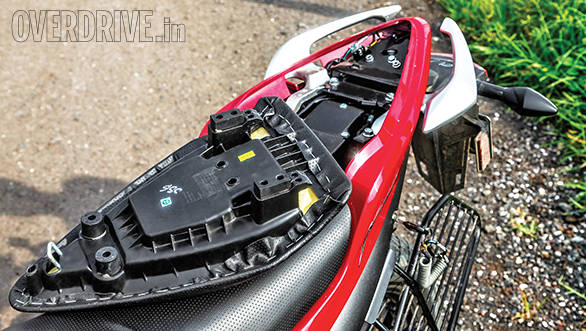 Pillion seat is fidgety and lock mechanism is inconvenient
Pillion seat is fidgety and lock mechanism is inconvenient
But in terms of features, there's a lot of nits to pick on this ZMR. The mirror mount baseplate screws are really soft metal and you'll round them very quickly when you tighten them. The mirror stalks are pretty wide, but they don't fold in. You think they do and they basically come loose when you fold them. The sidestand warning is scrolling text. A warning light would be a lot more effective. The engine kill switch is AWOL. Our indicator switches were ultra recalcitrant and overall switch quality is adequate at best. But the worst part from the useability perspective is the pillion seat. It releases through the oldest school non-spring loaded lock. So you turn the key and then reach into the muck and push a lever down to release. This is replaced universally by a spring-loaded release lock today. But the pillion seat is ultra-fidgety when it comes to refit it and that's annoying. Most of the time, the lock lever wouldn't engage requiring another stab in the muck before the seat was locked again. If you're buying one, I'd say ignore the space under the seat for the papers. The hassle of getting in and out of there is just too much.
On the whole, the ZMR remains a very comfortable motorcycle to ride though the features spread and execution require a second look to make the motorcycle more convenient to live with.
Verdict
It isn't perfect, but I rather enjoyed riding the ZMR around town. I really like the torquey engine that makes riding in heavy, crawling traffic, down the deserted highway and everything in between so easy. And unlike the asthmatic, unstressed state of (Honda) tune, this ZMR breathes very well and is properly fast as a result too. Thanks to its expansive bodywork, it is also stunningly spacious. Even with nearly 40 litres of luggage mounted on the pillion seat, I had half a foot of clear air behind me in my normal riding position. I cannot remember the last Indian-made motorcycle I rode that offers this much space. It does have some niggles and annoyances but for Rs 1.1 lakh, the ZMR looks like a good deal. Is it the best deal? That's a question that can only be answered by a comparo.
Now consider what it means for Hero. I am liking the fact that the engine is proving to be one of the stars of the new ZMR's talent show. For a new R&D setup this is a good sign. You could dismiss this by saying they just upped compression, big deal. You might even be right. But when a baby learns to walk, you appreciate every small step towards full mobility not crib about the fact that the baby isn't running already. So, perfect the ZMR isn't. It improves upon many but not all aspects of the previous motorcycles. But it's clear to me after I ride it that Hero's on its way and motoring.
Images by Varun Anchan
-NA-
223cc
5-Speed
20.30
19.70
-NA-
